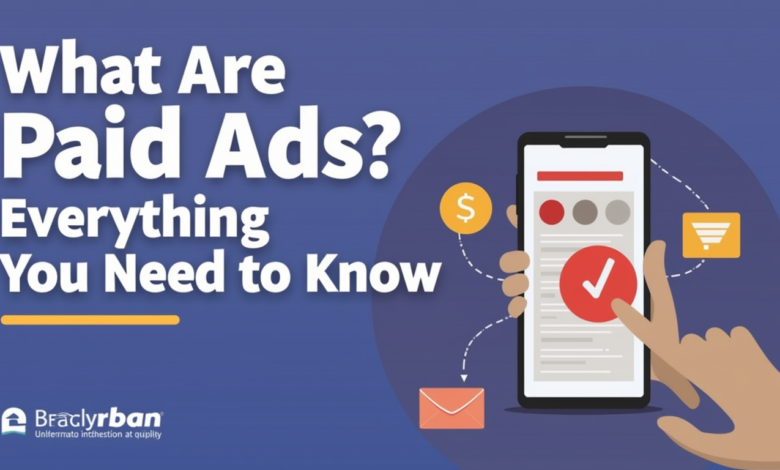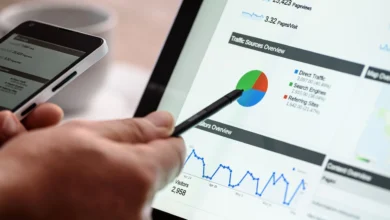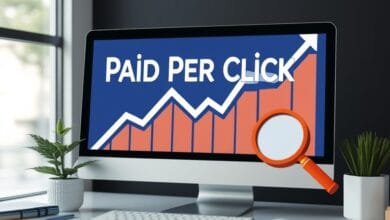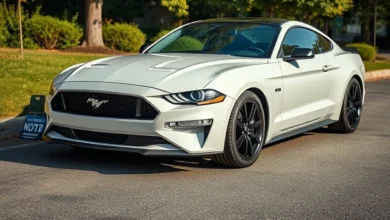What Are Paid Ads? Everything You Need to Know

In today’s digital landscape, it’s almost impossible to browse the internet without coming across a paid ad. Whether you’re scrolling through social media, searching on Google, or browsing your favorite blog, chances are, an ad is waiting for you. But have you ever stopped to wonder: What are paid ads, exactly? How do they work, and why are they such an integral part of digital marketing?
If you’re a business owner, marketer, or even a curious consumer, understanding paid ads is crucial. They not only help businesses reach their target audience but also offer consumers personalized and relevant experiences. In this guide, we’ll break down everything you need to know about paid ads, from what they are and how they work, to their benefits and how to get started with your own ad campaigns.
Table of Contents
What Are Paid Ads? A Simple Guide to Online Advertising
To put it simply, paid ads are advertisements that businesses pay for in order to promote their products, services, or brand online. These ads are displayed on various platforms like Google, social media sites, websites, and even apps, usually based on the interests and behaviors of the audience.
Paid ads can take many forms, including text ads, display banners, video ads, and even interactive ads. They are an essential part of digital marketing, helping businesses gain visibility, drive traffic, and ultimately, boost sales.
The best part? Paid ads are highly customizable. You can target your ads based on user demographics, interests, and search behaviors, ensuring that your ads reach the right people at the right time.
How Do Paid Ads Work?
Paid ads function through different pricing models, such as Pay-Per-Click (PPC) and Cost-Per-Impression (CPM). When you set up a paid ad campaign, you’ll bid on certain keywords or placements, and the platform will display your ads to users who are most likely to be interested in what you’re offering.
For example, if you run a pet store, you could target people searching for terms like “dog toys” or “cat food” on Google. When someone searches for these keywords, your ad could appear at the top of the search results.
Types of Paid Ads – Exploring Different Options
Paid ads come in various forms, each with its own unique benefits. Here’s a breakdown of the most common types of paid ads you’ll encounter online:
Search Engine Ads (PPC)
Pay-per-click (PPC) ads, also known as search engine ads, are one of the most widely used forms of paid advertising. When you run a PPC campaign, you bid on specific keywords related to your business, and your ad appears on search engine results pages (SERPs) when someone searches for those keywords.
Why use search engine ads?
- Instant visibility: Your ads appear at the top of the search results immediately.
- Intent-driven: People who click on your ads are actively searching for the products or services you offer.
- Highly targeted: You can refine your audience based on factors like location, device, and time of day.
For instance, if you own a bakery and bid on keywords like “fresh bread near me,” your ad could show up whenever someone searches for it, putting your business in front of ready-to-buy customers.
Display Ads
Display ads are visual advertisements that appear on various websites across the internet. These ads can be in the form of banners, sidebars, or pop-up windows, and they are often used for brand awareness or remarketing efforts.
Why use display ads?
- Visual appeal: With rich media, such as images or videos, display ads can be highly engaging.
- Great for brand recognition: Display ads are perfect for keeping your brand top-of-mind.
- Retargeting: You can target people who have already interacted with your website or products.
For example, if someone visits your online store and browses your selection of shoes, you can retarget them with display ads showcasing your most popular products, reminding them to complete their purchase.
Social Media Ads
Social media platforms like Facebook, Instagram, LinkedIn, and Twitter offer advertising options that let businesses target users based on their demographic information, interests, and behaviors. These ads can appear in users’ feeds, stories, or sidebars, and they are designed to integrate seamlessly into the platform’s content.
Why use social media ads?
- Advanced targeting: Platforms like Facebook allow you to target based on location, age, gender, interests, and even specific behaviors.
- Cost-effective: Social media ads can be affordable, especially if you’re targeting a smaller, niche audience.
- Engagement-driven: Social media ads are great for encouraging likes, shares, and comments, creating a more interactive experience.
If you’re launching a new product or service, Facebook or Instagram ads are an excellent way to reach a highly targeted audience and drive traffic to your site.
Video Ads
Video ads are another powerful form of paid advertising, often displayed on platforms like YouTube, Facebook, and even within mobile apps. Video ads can range from short clips to full-length commercials.
Why use video ads?
- Engagement: Video content is more engaging and can help build emotional connections with your audience.
- Storytelling: You can use video to tell your brand’s story in a way that’s much more impactful than text or images alone.
- Great for brand awareness: Video ads are perfect for showcasing new products or services and building brand recognition.
Whether it’s a product demo or a behind-the-scenes look at your business, video ads can help deliver your message in a memorable way.
Why Are Paid Ads Important for Businesses?
Paid ads are not just an opportunity to promote your brand—they’re also a powerful tool for driving business growth. Here’s why they’re crucial for your business:
Instant Traffic and Visibility
When you launch a paid ad campaign, your ads appear immediately. This is in stark contrast to organic SEO, which can take time to see results. If you need to drive traffic quickly, paid ads are the best option. Whether you’re promoting a sale or launching a new product, paid ads give you instant visibility.
Targeting and Customization
Paid ads allow you to target very specific groups of people. Whether it’s by location, age, income, or interests, you can make sure your ads reach the right people at the right time. This level of customization ensures that your ad budget isn’t wasted on irrelevant clicks.
Measurable Results
One of the biggest advantages of paid ads is the ability to track performance. Platforms like Google Ads and Facebook Ads provide detailed analytics that show you how well your ads are performing. You can track metrics like click-through rate (CTR), conversion rate, cost per acquisition (CPA), and return on ad spend (ROAS).
Budget Control
Paid ads also give you full control over your budget. You can set daily or lifetime spending limits, and adjust your campaigns as needed based on performance. If a certain ad is performing well, you can allocate more funds to it. If something isn’t working, you can quickly pause or tweak the campaign.
How Do Paid Ads Benefit Consumers?
You might think that paid ads are just a tool for businesses to make money, but they also offer several benefits to consumers. Here’s how:
Relevance and Convenience
Paid ads are designed to be relevant to you. By leveraging your search history, preferences, and browsing behavior, advertisers can show you ads that align with your interests and needs. For example, if you’ve recently searched for hiking boots, you might see an ad for a sale on outdoor gear. This not only makes your online experience more convenient but also helps you discover products or services that you actually want.
Personalized Offers
Consumers benefit from paid ads through personalized offers, discounts, and promotions. If you’ve shown interest in a brand or product, you may be presented with a special discount code or a limited-time offer, making it easier to take advantage of deals.
Supporting Free Content
Many websites and content creators rely on ads to fund their content. Without ads, they might need to charge users for access, which could limit accessibility. By engaging with paid ads, consumers help support free content online, ensuring that their favorite blogs, videos, and websites remain available.
How to Set Up a Paid Ad Campaign – A Step-by-Step Guide
If you’re ready to launch your own paid ad campaign, here’s a simple guide to get you started:
1. Choose the Right Platform
The first step is to select the platform that best suits your business and audience. For instance, Google Ads is great for capturing search intent, while social media platforms like Facebook and Instagram excel at targeting specific demographics.
2. Conduct Keyword Research
Keywords are the foundation of your PPC campaigns. Use tools like Google Keyword Planner or SEMrush to find relevant keywords that your audience is searching for. Make sure to target both short-tail and long-tail keywords for optimal results.
3. Create Compelling Ad Copy
Your ad copy should be concise, clear, and compelling. Focus on the benefits of your product or service, and include a strong call-to-action (CTA) that encourages users to click.
4. Set Your Budget
Decide how much you want to spend on your campaign. Platforms like Google Ads let you set a daily or monthly budget, and you only pay when someone clicks on your ad or views it.
5. Monitor and Optimize Your Campaign
Once your ads are live, regularly monitor their performance. If you notice certain ads are underperforming, make adjustments to improve results. Test different versions of your ads, try new keywords, or modify your targeting settings.
Conclusion
Paid ads are an essential part of today’s digital marketing ecosystem, helping businesses drive traffic, increase sale



